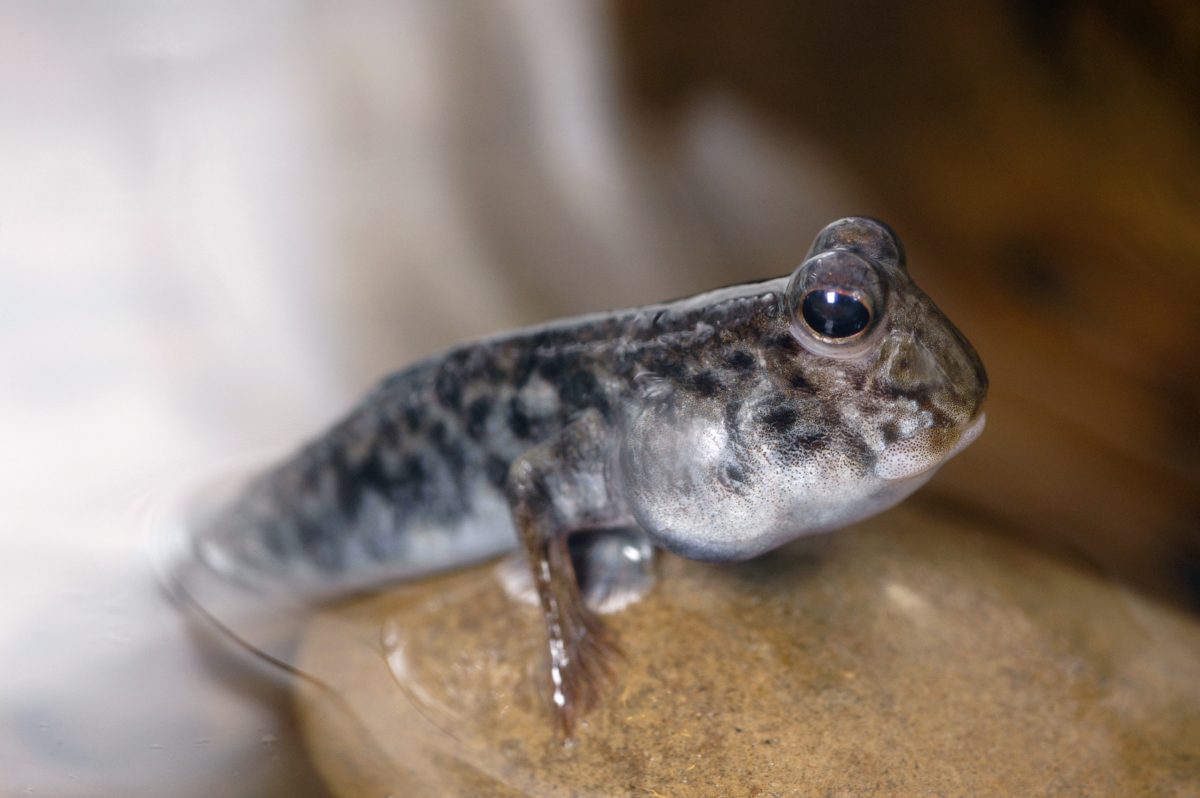Fishes and other nonhuman animals are often highlighted in various phrases and sayings we humans like to use in English and other languages, such as “the cat’s meow.” One saying that involves marine animals is “a fish out of water.” As many know, this saying refers to someone who is having trouble coping with an unfamiliar situation. It seems to make sense because typically fishes cannot breathe when they are out of the water, and they typically have no legs to move about. However… in keeping with the incredible diversity of the marine world, some fishes do just fine out of water.
Mudskippers
Mudskippers can be found in some nature parks and reserves in Singapore. Not only can they breathe on land, but mudskippers’ fins allow them to crawl on muddy surfaces. They also skip by twisting their bodies sideways before pushing against the mud to skip forward. At least one species, slender mudskippers, can even, incredibly, use their fins to climb trees.
Lungfishes
Lungfishes, estimated to be approximately 400 million years old, are also at home when out of water. Even more impressive, when the water they are living in dries up, five of the six species of lungfishes have the ability to bury themselves in mud and survive for more than a year, by which time the waters will, climate change permitting, have returned. Lungfishes survive via a process similar to hibernation, known as estivation. During estivation, these adaptive creatures protect themselves by excreting mucus to form a kind of protective cocoon. For nutrition, they digest some of their own muscle tissue.
Northern Snakeheads
Northern snakeheads, so called because their mottled appearance resembles that of snakes, are yet more air-breathing fishes. They can breathe thanks to an air bladder than functions like a lung called a suprabranchial organSimilar to lungfishes, snakeheads can survive in mud during droughts. In fact, the northern snakehead can survive on land for up to 4 days! Northern snakeheads aggressive habits have made them an invasive species in North America.
European Eels
But when it comes to flexibility, including the ability to breathe on land, perhaps European eels are the champions. These incredible creatures begin their long lives in the Sargasso Sea, in the northwest Atlantic. From there begins a journey across the Atlantic to Europe, from salt water to fresh water, through four life stages.
During this journey of thousands of kilometres, the European eels traverse not just an ocean, but also lakes, rivers, streams, ponds, swamps, and perhaps even ditches and drains. Furthermore, they can survive on land for as long as two months. Sadly, European eels, like so many other marine animals, are endangered, with their population estimated to be at only one percent of normal levels. Factors accounting for this decline are mostly linked to human interference, such as dams blocking migration routes, climate change, and pollution.[
The Evolutionary Creativity of Marine Animals
So many marine animals, like those fishes who can live out of water, show so much creativity in developing the diversity they need to survive. They have overcome so many obstacles, evolving continuously for many millions of years. But now, with the sudden (in geologic time) changes humanity has wrought, will they be able to adapt quickly enough to survive the Anthropocene, or will they be metaphorically “fishes out of water” with nowhere to live on a planet their ancestors inhabited for millions of years?
What You Can Do
Follow these recommendations to help endangered fish species and preserve our miraculous and biodiverse marine life.
